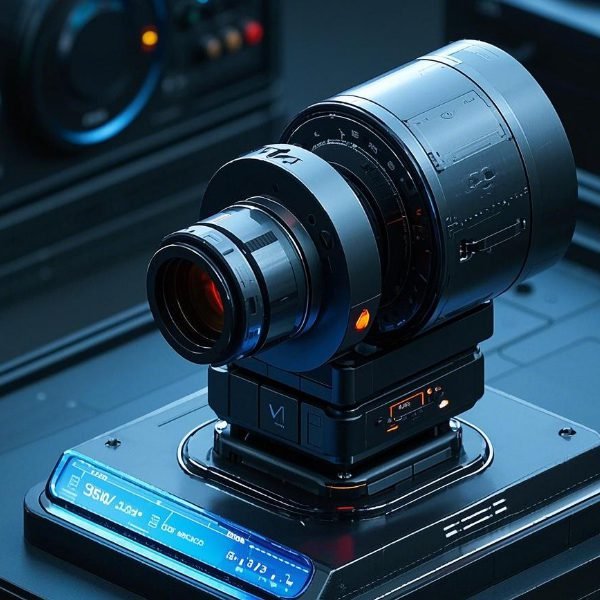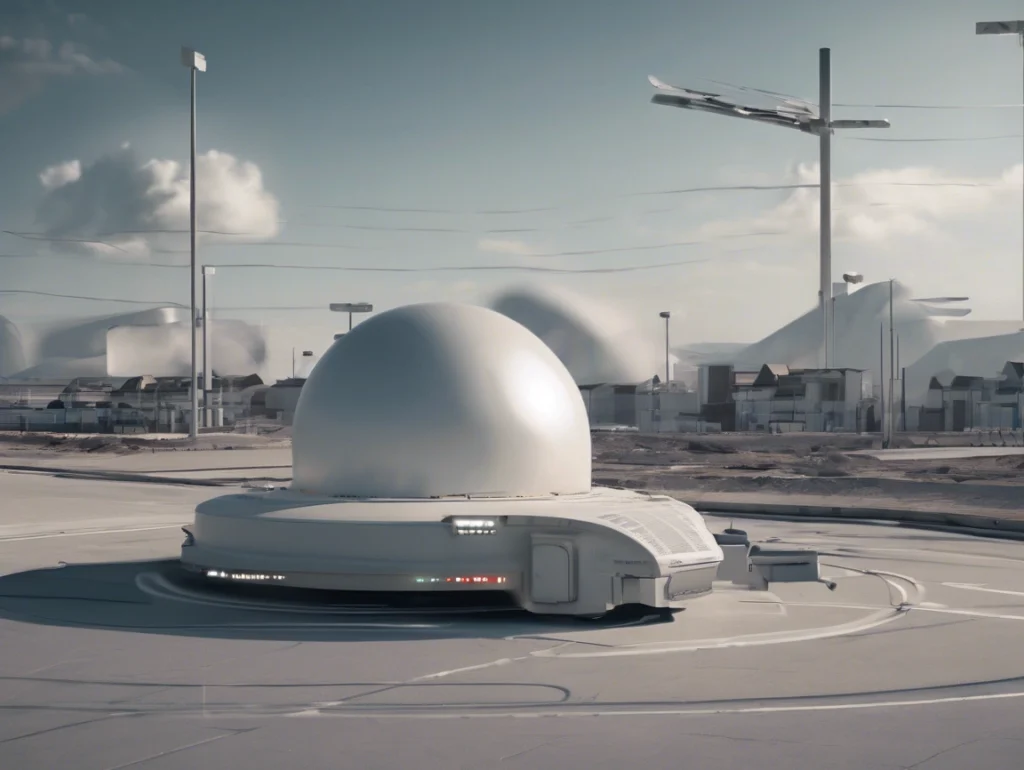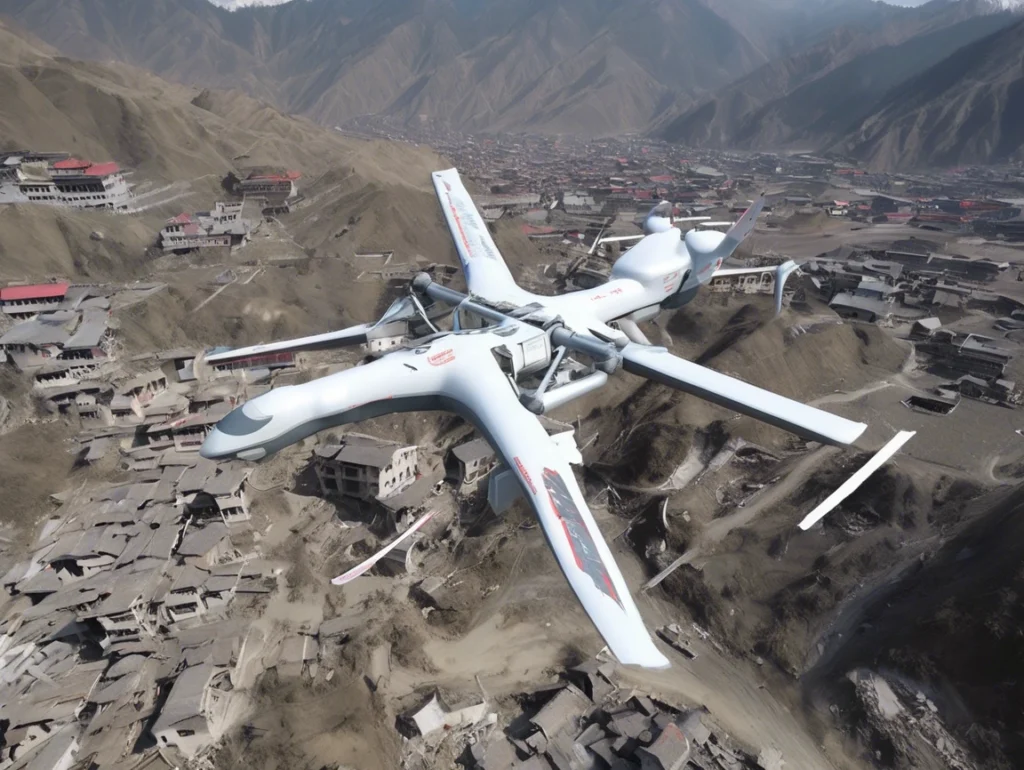
As a shining pearl among them, the three-axis infrared search and tracking system shines in many key areas with excellent performance. It integrates cutting-edge technologies such as optics, electronics and precision mechanical control to provide high-precision and high-reliability solutions for target search, identification and tracking. It is like a precision sensing weapon at the forefront of science and technology to keenly capture the dynamics of the surrounding environment.



Core hardware component
Search-and-turret: As the core carrier of the system, Search-and-turret has precise integration of infrared thermal imager, white light camera and laser rangefinder. The infrared thermal imager uses the target’s own infrared radiation imaging to clearly capture the thermal characteristics of the target in dark, smoke, sand and other harsh environments and long-distance scenes to achieve all-weather monitoring. White light cameras take advantage when the light is good, providing high-resolution, colorful target images to help accurately identify target details. The laser rangefinder can accurately calculate the distance between the target and the system by transmitting the laser beam and measuring the reflected light time difference, which provides key distance data for follow-up tracking and analysis.
Display and control terminal: Display and control terminal is an important window for the interaction between the system and the operator, and the powerful integrated display and control software is installed. The software has an intuitive and friendly user interface, and displays the target image, distance information and tracking data collected by the search and turret in real time. Operators can flexibly control the system through the display control terminal, for example, setting the search area, adjusting tracking parameters, and starting or stopping the search and tracking task to achieve efficient system management and operation.
Portable battery: To ensure the system’s mobility and independence in complex environments, the portable battery provides stable power support for the three-axis infrared search and tracking system. It has the characteristics of high energy density, long battery life and fast charging, which can meet the needs of long-term continuous operation of the system. Whether it is field work, emergency response or temporary deployment, the portable battery ensures the normal operation of the system, allowing operators to carry out tasks without power location constraints.
Tripod: The tripod provides a stable support platform for the system, and the height and Angle can be flexibly adjusted to adapt to different terrain and observation needs. When the system is installed, the tracking turret is adjusted to the right height and orientation via a tripod to ensure that the system can search and track the target area with the best view. At the same time, the stability of the tripod effectively reduces the interference of external vibration to the system, ensures the imaging quality and tracking accuracy, and improves the overall stability of the system.
Communication networking devices (optional) : In scenarios where multiple systems work together or remote data transmission occurs, communication networking devices play a key role. It realizes the data communication and interaction between the system and other monitoring equipment and the command center, uploads the collected target information to the superior platform in time, and receives the command center’s instructions at the same time to achieve remote control and collaborative work. Common communication networking modes include wireless communication (such as 4G/5G and Wi-Fi) and wired communication (such as Ethernet). Users can select appropriate communication modes and devices based on actual application scenarios and requirements.
Workflow and principle
Search phase: After the system is started, the search tower scans the full range or specific areas according to the preset search mode. The infrared thermal camera and the white light camera work simultaneously to detect targets in the scanned area. The infrared thermal imager uses the thermal radiation difference of the object to quickly discover the potential target, converts the infrared radiation signal into an electrical signal and transmits it to the signal processing unit. The white light camera assists in obtaining clear image information of the target when the light permits. Laser rangefinders stand by. Measure distance as soon as possible.
Target recognition stage: the signal processing unit performs complex processing such as denoising, enhancing and feature extraction on the received infrared and visible signals. Advanced image recognition algorithm and target classification model are used to distinguish targets from background noise and other interferences, and initially identify target types (such as people, vehicles, aircraft, etc.). Combined with the distance information provided by the laser rangefinder, the identity and attribute of the target are further confirmed, which provides an accurate basis for follow-up tracking.
Tracking phase: After the target is successfully identified, the system quickly enters the tracking mode. Under the command of the precision control system, the three-axis drive mechanism of the tracking turret quickly and accurately adjusts its own attitude according to the real-time position and movement trajectory of the target, so that the target is always kept in the center of the system field of view. Infrared thermal camera and white light camera continuously monitor the target, constantly update the target position, speed, acceleration and other motion parameters, and feed back to the signal processing unit. The signal processing unit predicts the next movement trend of the target according to the real-time data, and timely adjusts the tracking strategy to ensure that the system tracks the target stably and accurately, and can maintain the tracking continuity even if the target maneuvers quickly or blocks briefly in a complex environment.
Technological advantage
High precision tracking performance
The three-axis infrared search and tracking system adopts advanced three-axis stabilization technology to effectively isolate external vibration and interference, and ensure the stability of the search and turret movement. With high-precision sensors and advanced tracking algorithms, sub-pixel tracking accuracy of the target can be achieved to accurately capture the subtle movement changes of the target. In military reconnaissance, it can accurately track long-distance flying drones or low-flying helicopters to provide reliable target information for subsequent strike operations; In the field of industrial testing, it can monitor the tiny parts on the high-speed equipment in real time, find the hidden trouble of the parts in time, and ensure the safe and stable operation of the production equipment.
Quick response capability
The system has the ability of fast target search and acquisition, and the time from starting search to locking target is very short. The tower’s high-speed drive motors work in tandem with efficient signal processing units to instantly scan large areas and quickly identify targets. Once the target is found, the tracking system is activated immediately, adjusting the attitude of the search tower with a millisecond response speed, and closely following the target movement. In the security monitoring scenario, when suspicious personnel break into the warning area, the system can find and lock the target in a very short time, issue an alarm in time, and win valuable disposal time for security personnel, effectively improve the emergency response capability of the security system.
Strong environmental adaptability
Adaptability to bad weather: Whether it is heavy rain, fog, dust or snow, the three-axis infrared search and tracking system can work normally. The working principle of the infrared thermal imager makes it not affected by light and bad weather, and can penetrate the media such as rain, fog, sand and dust to clearly detect the target. In forest fire prevention monitoring, even if the mountain forest is full of smoke, the system can accurately find hidden fire sources, provide accurate fire source location information for fire fighting operations, and effectively respond to fire monitoring challenges in bad weather.
Complex terrain adaptability: The system can adapt to a variety of complex terrain, whether it is mountainous, hills, canyons and other terrain rolling areas, or complex urban high-rise areas, can run stably. The flexible adjustment function of the tripod and the compact design of the system enable it to be quickly installed and deployed under different terrain conditions to achieve effective monitoring of the target area. In border patrol, the system can closely monitor the border in complex terrain environments such as mountainous areas, timely detect illegal border crossings, and maintain national territorial security.
Good concealment
Different from active detection equipment such as radar, the three-axis infrared search and tracking system is a passive detection equipment, which does not emit electromagnetic signals during the working process, but only receives the infrared radiation emitted by the target object itself. This gives the system excellent concealment, is not easy to be detected by the enemy, and has significant advantages in scenes such as military reconnaissance and anti-terrorism operations that require high concealment. For example, in special operations, special operators can carry the system to silently search and track enemy targets, providing intelligence support for combat operations, and do not expose their own location, greatly improving the safety and success rate of combat operations.
Discover more from SHENZHEN LEISHI SENSING OPTOELECTRONICS CO., LTD.
Subscribe to get the latest posts sent to your email.






